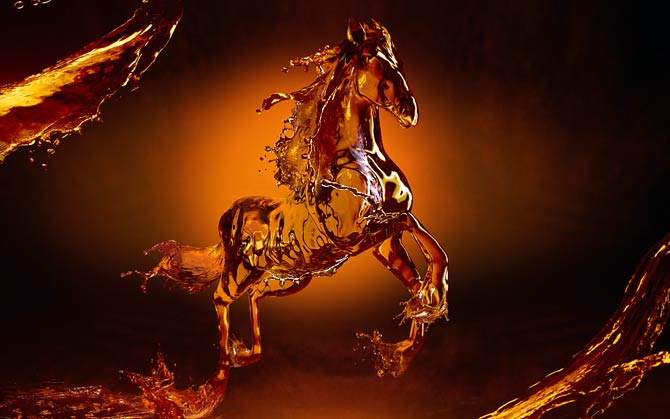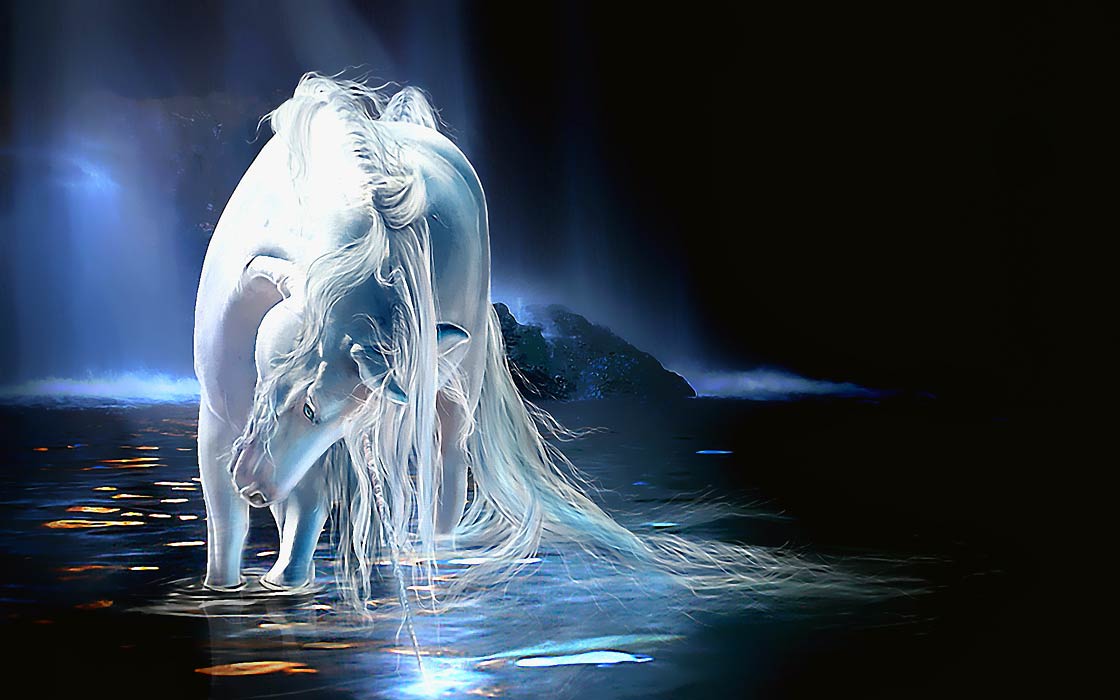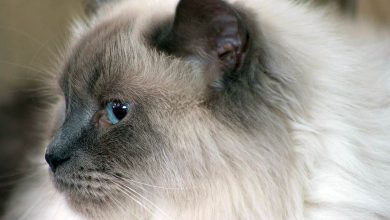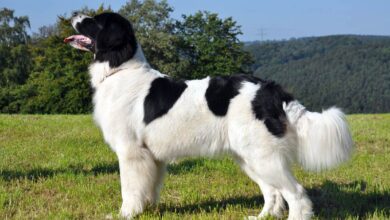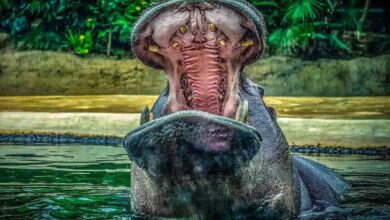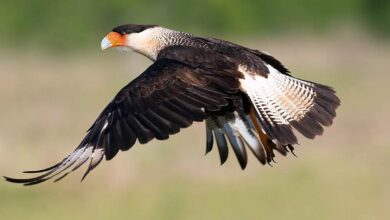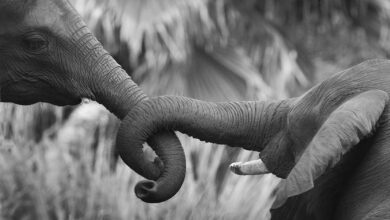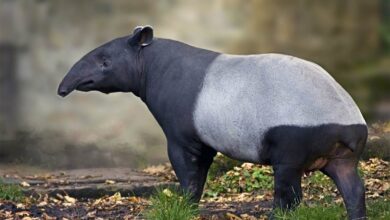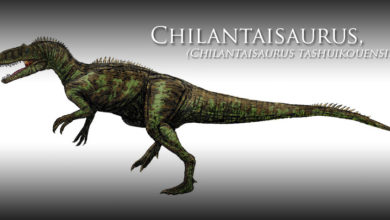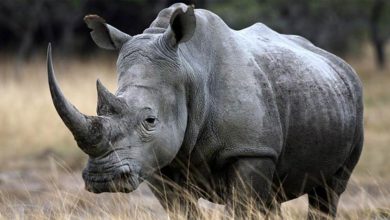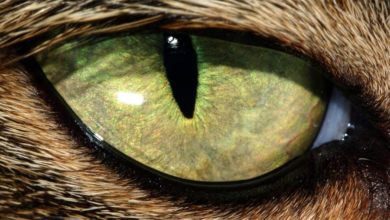Horses (not) from this land
In many mythologies and dreams, the horse symbolized power, mental energy and domination. In a word, the horse is a symbol of masculinity. In this article, we will try to present the most famous horses and creatures similar to them.
Perhaps it will turn out that the symbolism is much richer than the one presented at the beginning. We also hope that this and the next few articles will encourage you to get to know animals out of this world. First, a list of six fairy-tale-mythological horses.
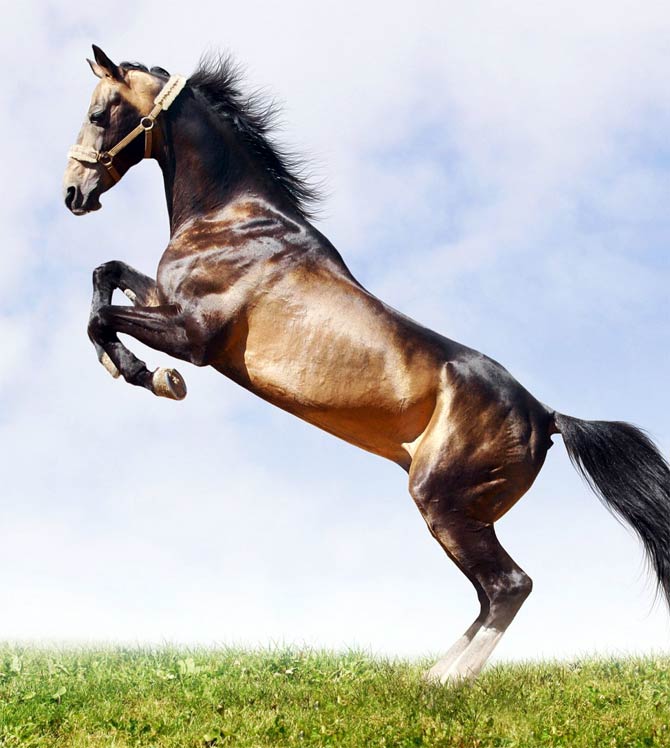
Bucephalus / Bucephalas
The untamed nature would scare off any daredevil who wanted to tame him. However, 9 (or 12-year-old) Alexander, son of Philip II of Macedon – the king of Macedon, did it. The brave boy, who in the future will be known as Alexander the Great, won the first bondsman – a stallion named Bucephalus, who accompanied him on all his trips. The last joint stop was India and the war on the Hydaspes River in 326 BCE, where Bucephalus fell.
To honor his faithful companion, and the memory of him has never died out, the king of the Macedonian Empire called today’s Jabalpur (Pakistan) Bucephala.
The horse was described as a mighty animal with a black coat and an unusual gaze coming from blue eyes. But where does its name come from? It is difficult to categorically decide – it may be related to the bull-shaped birthmark (Bucephalus – “bull-headed”) or to the shape of the head itself, and the silhouette which may have been wide and impressive as an ox.
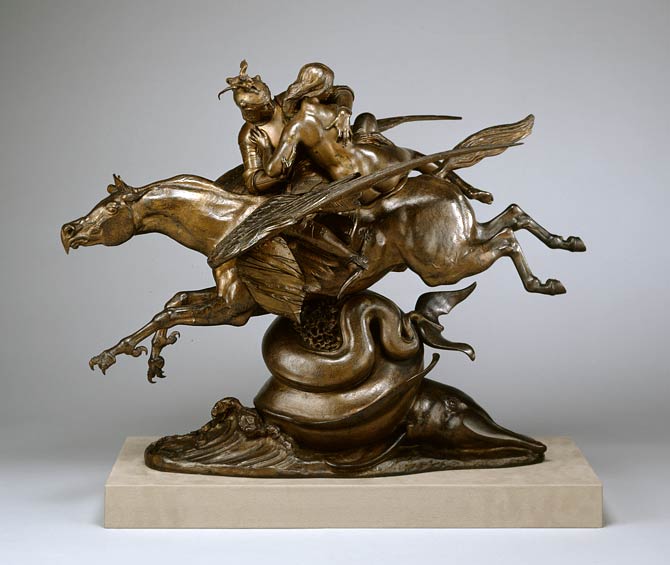
Hippogriff / hippogryph
While Bucephalus was a real and legendary animal, another creature has little to do with reality. Known more widely thanks to novels and films “Harry Potter”, is an unusual combination of the head, claws and wings of an eagle with the body of a horse, and more specifically a mare. The second part of the name – the griffin – is related to another mythological creature described by the same word, being a hybrid of an eagle and a lion. The mighty flying hippogriffs acted as pack animals – they transported people and objects on their backs.
The first mentions of the hippogriff come from the pastorals of the Roman poet Virgil, his character is also depicted during the reign of the Merovingians, and was first named and defined by Ludovico Ariosto in the piece “Orlando furioso” (Orland mad), written at the beginning of the 16th century. In this epic, the hippogriff was born of mares and griffins, moreover, he was very fast – he could fly all over the Earth and even reach the Moon.
However, not everyone could ride it, it was an honor reserved for mages and a wandering knight named Ruggiero, who, flying on the back of a hippogriff, saved the beautiful Angelica. The figure of a hybrid of an eagle and a horse is also visible in many coats of arms, it became the subject of the visual art of the nineteenth century, which at that time was most often drawn and painted by Paul Gustave Doré.
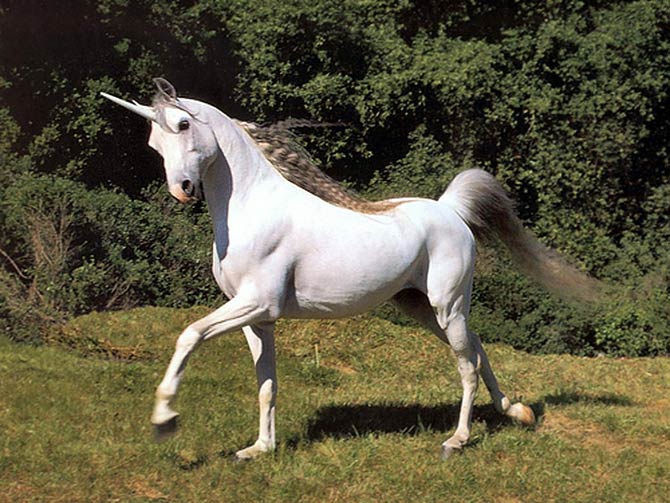
Unicorn
Another mythological horse is the unicorn that is fashionable among Internet users today. Often described as a beautiful creature with one horn on his forehead, sometimes with cloven hooves like that of a goat or a deer. The color of the coat can be anything, but it is usually white. Many parts of his body were used for magic and healing potions, including mane and tail hair, hooves, horn, and blood. Faithful fans of “Harry Potter” have probably seen that the core of the main character’s wand was made of unicorn hair.
He is credited with many healing and cleansing properties. Perhaps for this reason his image appears in many coats of arms. It is said that this horse appears only to a virgin and can only be tamed by her.
For centuries, many ancient peoples were convinced of the existence of unicorns, and even the Bible mentions them. Therefore, attempts were made to find out what real animal could be described in numerous books and chronicles. Some believe that these were simply goats with a single horn, a theory supported by the remains found. However, this does not change the fact that the enterprising Vikings sailing on the seas and oceans sold in their country narwhal fangs brought from the cold waters – a cetacean, whose tooth looked identical to an imaginary unicorn horn.
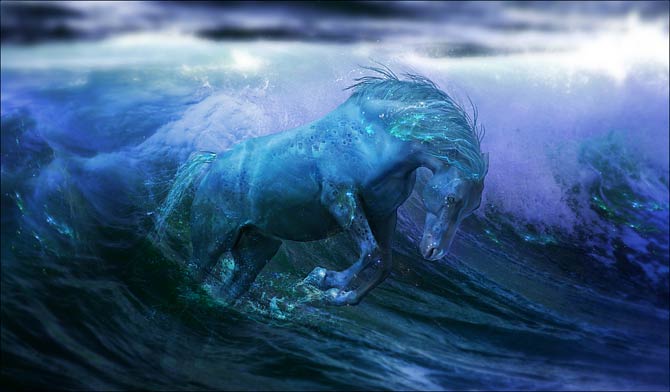
Kelpie / water kelpie
Does it tell you nothing? Don’t worry, Kelpie is a character from little-known Celtic mythology. This horse haunted and inhabited the lakes and rivers of Scotland and Ireland. According to legend, it looked like a large pony with white, black or blue color. This time, however, the horse is not a cute creature, but a trickster who urges people to enter the water and eat them. Kelpie is another horse character in “Harry Potter”. His Slavic counterpart is Utopiec (Vodnik, Topnik).
Kelpie was seen as a lost pony whose trademark was blue, always wet mane. The bristles on her and her tail were a little twisted anyway, the skin clammy and cold like a dead animal’s. Kelpie was said to have liked to transform into beautiful women to make it easier to attract gullible people into the depths of the water. This cunning horse, however, only created the illusion it was hiding behind. To see the whole situation, he only stuck his eyes above the water. He lured people to climb the ridge, but when the person decided to do so, there was no question of a nice ride – Kelpi’s skin became sticky and the journey ended underwater, where the ghost devoured the poor man, avoiding the heart or the liver.
Across Scotland, there is a shared tale of nine children Kelpie drowned on his sticky back. The last of the children – the tenth – did not want to “take a ride”. The furious horse chased the little boy, but he managed to escape. A more macabre version of the story says that the last child stroked Kelpie, and when the hand stuck to the horse’s skin, he took a knife from his pocket and cut off his own hand, and burned the stump over the fire…

Pegasus
Probably the second most recognizable mythical horse after the unicorn. The winged Pegasus has symbolized freedom, power and victory in many cultures. He was born of the head, body or blood of Medusa – one of the three mythical Gorgon sisters, who had snakes for hair and eyes that turned a person to stone. This terrifying head was cut off by Perseus – the Greek hero.
Perseus was the first to ride Pegasus, and one of the most famous riders was Bellerophon, who, out of his pride, decided to fly on Pegasus to Mount Olympus. The idea did not appeal to Zeus, who knocked the young man off the flying horse, while Pegasus continued his flight to the Mountain, where the most important of the gods greeted him, giving him the task of bringing lightning.
Thus, Pegasus became the most important horse of Zeus. On the last day of the life of a flying horse, Zeus turned it into a stellar constellation that we see today in the northern hemisphere of the sky between summer and autumn.
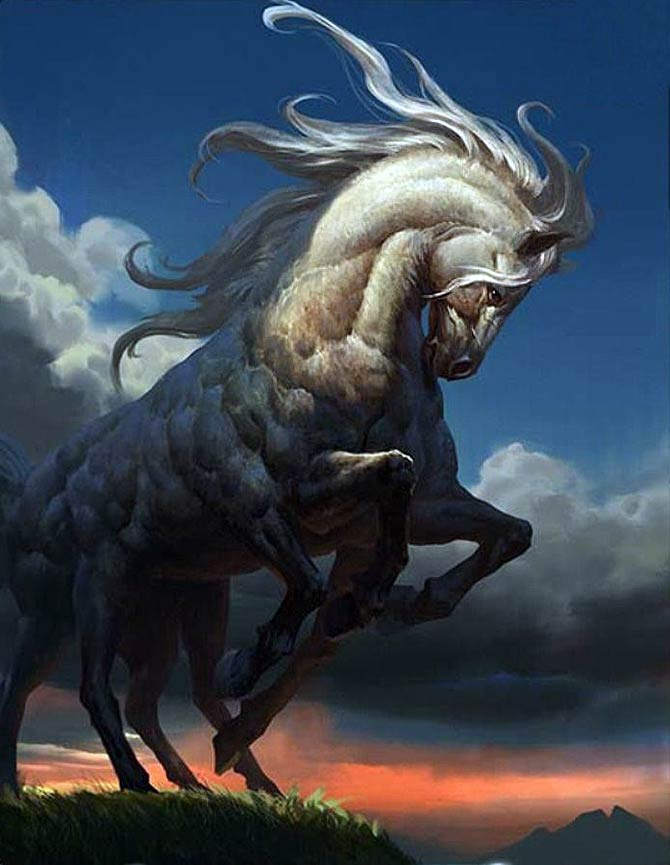
Sleipnir
We head to the north of Europe and read into Norse mythology to get to know the eight-legged horse belonging to the highest Norse god – Odin. According to many accounts, Sleipnir is the child of Loki and Svaðilfari. He was distinguished by impressive speed, he could fly, but he also had a firm footing and could jump over any object. Since he was considered the best horse, he was allowed to visit Helheim – one of the Nine Worlds, the place of the dead that can be described as Hell.
It is possible that Odin and Sleipnir are the prototypes of the modern legend of Santa Claus and his flying reindeer.
